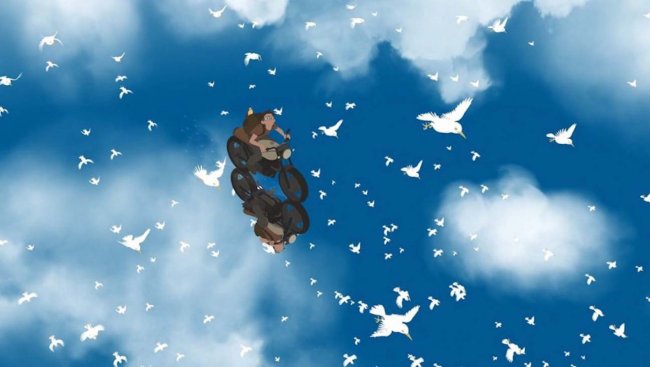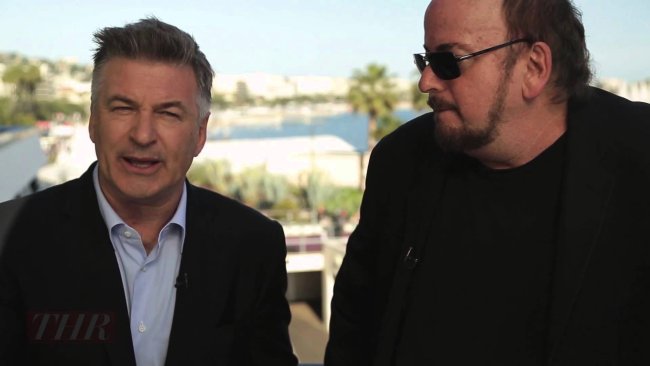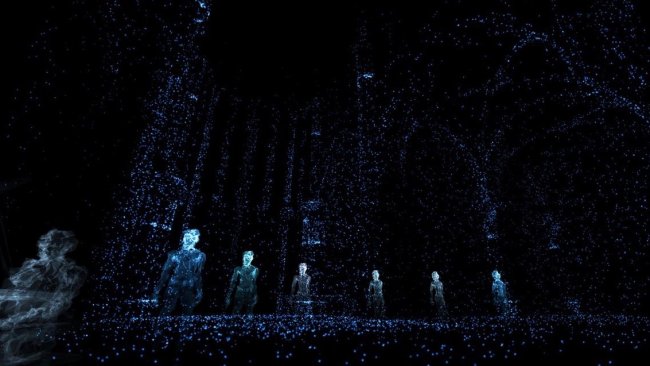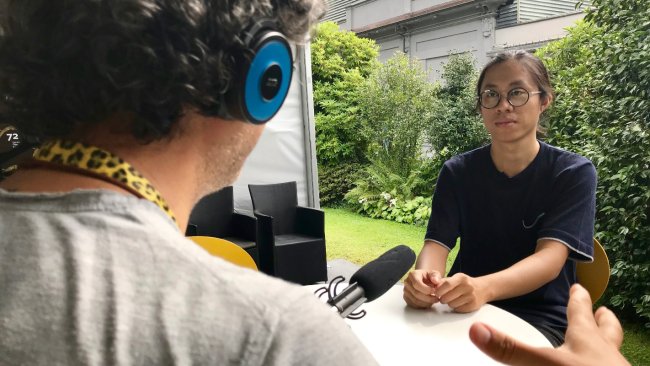To Watch the War
[…] One has the impression that it is not so important how the image and the moving image are created but rather what we do with images or moving images.
[…] A sort of exhaustion of the power of images and an almost spiritual interest for sound and the invisible, be it through radio waves or in confronting nature, seems quite evident to me.
Text: Giuseppe Di Salvatore
What does “amidst” mean?
As the title of the exhibition states, the focus is not on the war escalation after the invasion of Ukraine, but on the moving image amidst this situation of violence. The relationship between war and the moving image is the main theme of the exhibition, and this relationship appears as an open question, insofar as one could ask oneself, for example: are the moving images, certain moving images, experimental moving images, the consequence of the war?
It would actually be quite simplistic to explain this relationship exclusively in causal terms: a war is going on; let’s go experimental! I cannot but recall the historical fact – which is constantly recurring in the form of public secrets – that since the First World War images, and especially moving images, have largely influenced the mean and scopes of war. The causal relationship between war and moving images can even be inversed… The intertwining of the two is complex, and it is up to us to question it, and this also because the curators (Olexii Kuchanskyi and Oleksiy Radinski, in collaboration with Annette Amberg) do not seem to want to develop one discourse, or thesis, but to record a situation of urgency that is expressed through said moving images. Political urgency, existential urgency, and artistic urgency are almost impossible to disentangle in wartime, and the exhibition works as a witness to this fact.
In this sometimes confusing, sometimes productive mixture of urgencies, an easy but still legitimate reading would be the romantic one of the artist as a political hero who uses experimentalism as a weapon to react and resist against war. A refined version of this reading would add that experimentalism is a critical tool that is partly generated from the liberating effects of the war itself, that creates a context of “ultimateness” where one eagerly rids oneself of inhibitions and excessive self-control, and dares to test new forms and paths.
A new aesthetic?
From this point of view, there is an interesting familiarity between the aftermath of postmodern aesthetic, such as the complete abandonment of the accomplished work and any formal positioning, and the eventual aesthetic that one could read in the heterogeneous gathering of ideas of the very well-structured Winterthur exhibition. The rough, spontaneous, unpolished (anti-)aesthetic of creating art under the pressure of war – Oleksandr Surovtsov’s Ontology is an example of this – non-programmatically fits to the postmodern (anti-programmatic) program. I won’t be able to answer the question: does the exhibition (want to) show or search for an aesthetic, or just stand witness to the existence of a fertile artistic soil for future blossoming? The concentration of works that clearly refer to a specific occasion of History cannot but make us raise the question of the presence of an eventual aesthetic trend.
A possible answer could only come after a closer look at the individual works – not without noticing and underlining that the 40% of the exhibited works have been realised by an artistic duo or a collective. This could be read as a symptom of how the obsession for monolithic authorship has become obsolete, or as the effect of the absence of an organised system of artistic production. However, the conjunctural need for a quick, low-definition, low-budget expression would be a grounded, probably true but too generic assessment of such an aesthetic.
Object, or burden, or tool: the image as support
For the visitor, 18 screens for 21 video works in the narrow spaces of Coalmine mean the recurrent gesture of wearing headphones and sinking into temporary bubbles of concentration. Now, I remark that the wires connecting the headphones to the screens are quite short, and one is obliged to look at the screen from a short distance. The apparently inaccurate installation reveals itself to be an advantageous immersive device, that cannot help but make us question the status of the image of the videos.
It would be superficial to limit ourselves to the accidental, non-refined character of the images. The first video that welcomes us in the exhibition, Myro Klochko’s and Anatoly Tatarenko’s Peace and Tranquillity, is unusually classic with its linearly telling voice over, and it also puts forward the image as picture. The image is an object, a theme: it has the static character of the photographic image. It is not a transparent tool in order to serve the illusion of movement and cinema but it is showed and manipulated as such, as a static object that is there to be discussed. A paradigmatic example of this attitude is Roman Himey’s and Yarema Malaschuk’s The Wanderer, where photography is animated through re-enactments.
One has the impression that it is not so important how the image and the moving image are created but rather what we do with images or moving images. This is perfectly coherent with the practice of using found footage in videos: they also have a static function and works as starting points for discussion or manipulation. In this regard we can focus, again, on the postmodern ideas of collaging, recycling, mixing or - probably in a more interesting way - on the creative way of manipulating the found images, as it is brilliantly clear in Dana Kavelina’s Letter to a Turtledove.
After a second round of watching the videos, I realise how relevant the manipulation of images effectively is: many superpositions of images, split screens, a whole series of After Effects findings and moreover a lot of writing on the screen. The image layer becomes a deflationary support for a discourse that is largely dominated by words.
Radio waves and the attraction of the invisible
By words and invisible voices. One of the oldest works in exhibition (2015) perfectly formulates the synthesis of found footage and voice: in Yriy Hrytsyna’s Varta1, Lviv, Ukraine, the radio channel emerges as the hidden protagonist of the Maidan uprising. This is a lateral point of view that creates a sort of “sound” (also in the sense of meaningful) alternative to the horrific images of violence. Almost the same dispositive based on found footage and radio voice interceptions animates the very inspiring two-channels video installation Sky. Invasion by Andriy Rachynsky and Daniil Revkovsky. An artistically mature development of this “radio connection” is Sashko Protyah’s wonderful The Film of Sand, where the element of waves – radio, water, oscillation of meaning and possibilities – expresses the attraction but also ephemerality of the invisible thread of distant voices.
I see this thread of invisibility as a kind of spiritual thread that is also bound to the inquiry of nature as a mysterious object, or a source of invisible and transcendental (also catastrophic) forces. In this way, I read Teta Tsybulnyk’s and Elias Parvulesco’s K-object from LL Group as an astral, cosmic development of the “radio connection”, which is further articulated in Elias Parvulesco’s …The Winds Have Swept Us Off in All Directions as a literal confrontation to invisibility and the status of the image through a reflection on darkness.
How (not) to watch the war
But what would be the connection to war, to watching the war? Did I follow a too abstract line in focusing on the polarity between the image and sound layers, between visibility and invisibility in the moving images amidst the war? Still, a sort of exhaustion of the power of images and an almost spiritual interest for sound and the invisible, be it through radio waves or in confronting nature, seems quite evident to me. This could constitute a line of interpretation for an eventual aesthetic of the video art emerging from these Ukrainian artists amidst the invasion of Ukraine.
This interpretation would also be interesting for the relationship between war and the moving images in general. The image layer of the moving images would effectively remain in a problematic complicity with war – a complicity of horror and pornography – while the sound layer or the invisible layer of moving images could be considered as a true element of resistance against war and its aftermath. Would the exhibition at the Coalmine in Winterthur be an occasion to learn something about the complex and dangerous bond between idolatry or icono-fetishism, and violence?
If so, To Watch the War would teach us how not to watch the war, but to listen out for cosmic and natural forces, or to seek for the invisible in the moving images, as strategies of resistance against the war.
Info
To Watch the War – The Moving Image Amidst the Invasion of Ukraine (2014-2022) | Exhibition | Curators: Olexii Kuchanskyi, Oleksiy Radinski, Annette Amberg | Coalmine Winterthur | 18/9-18/12/2022
Fokus Ukraine at Kino Cameo Winterthur
First published: November 07, 2022







